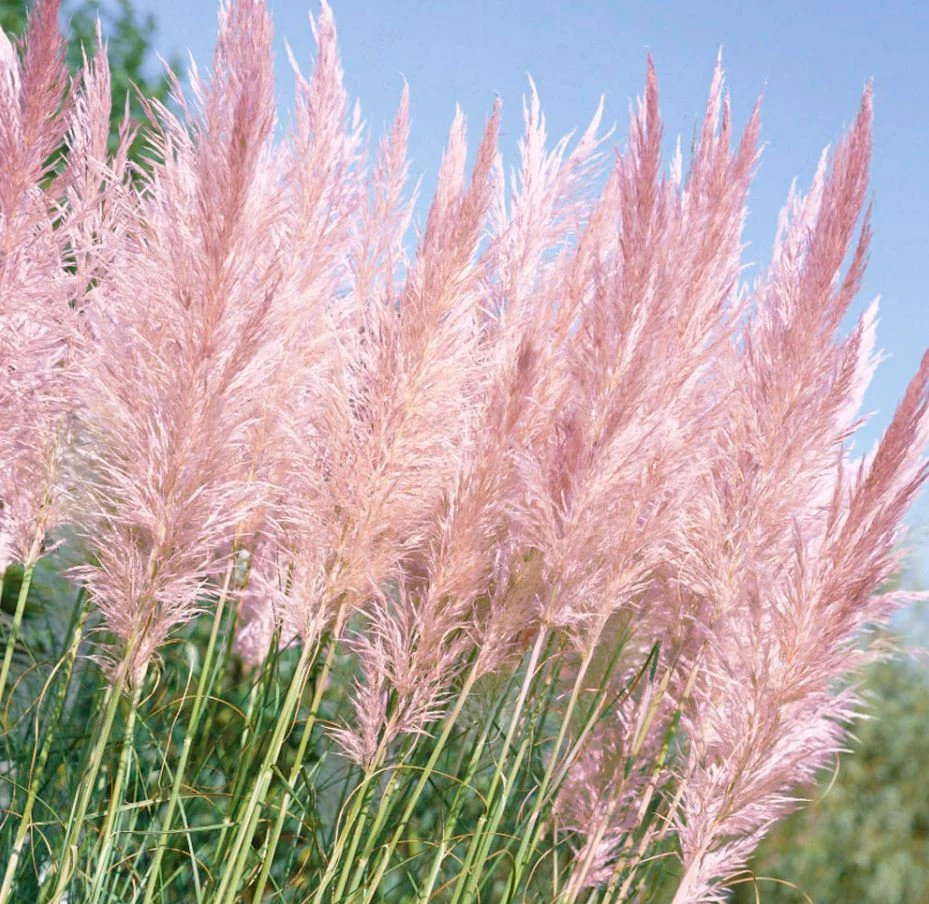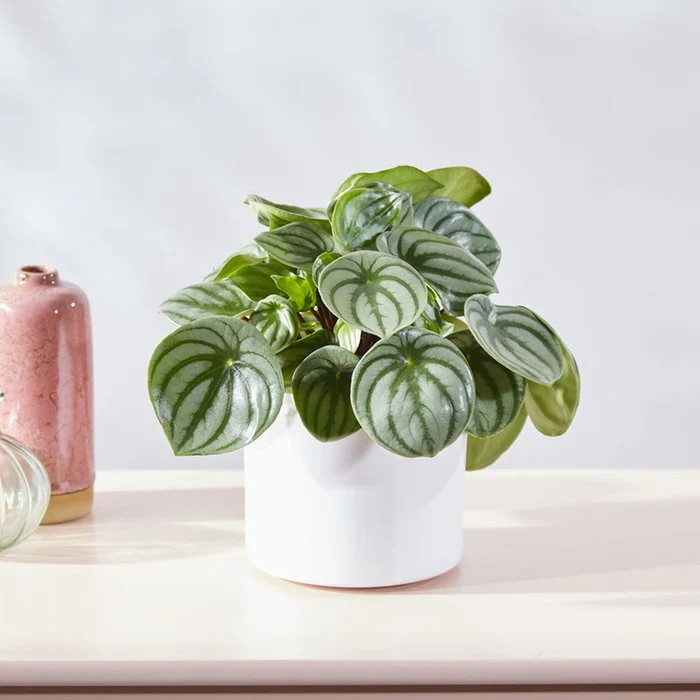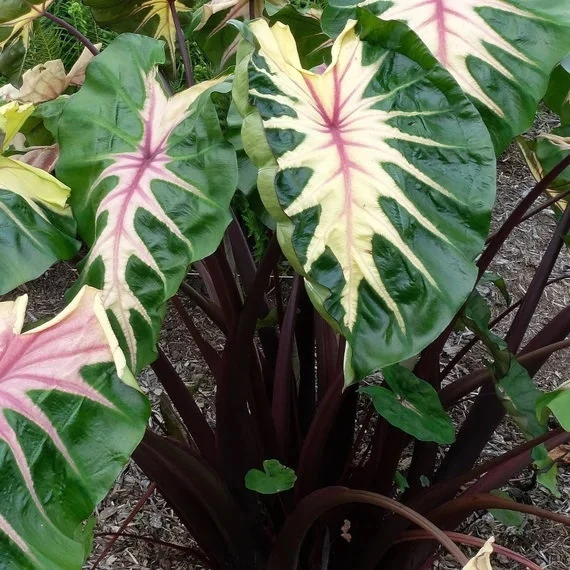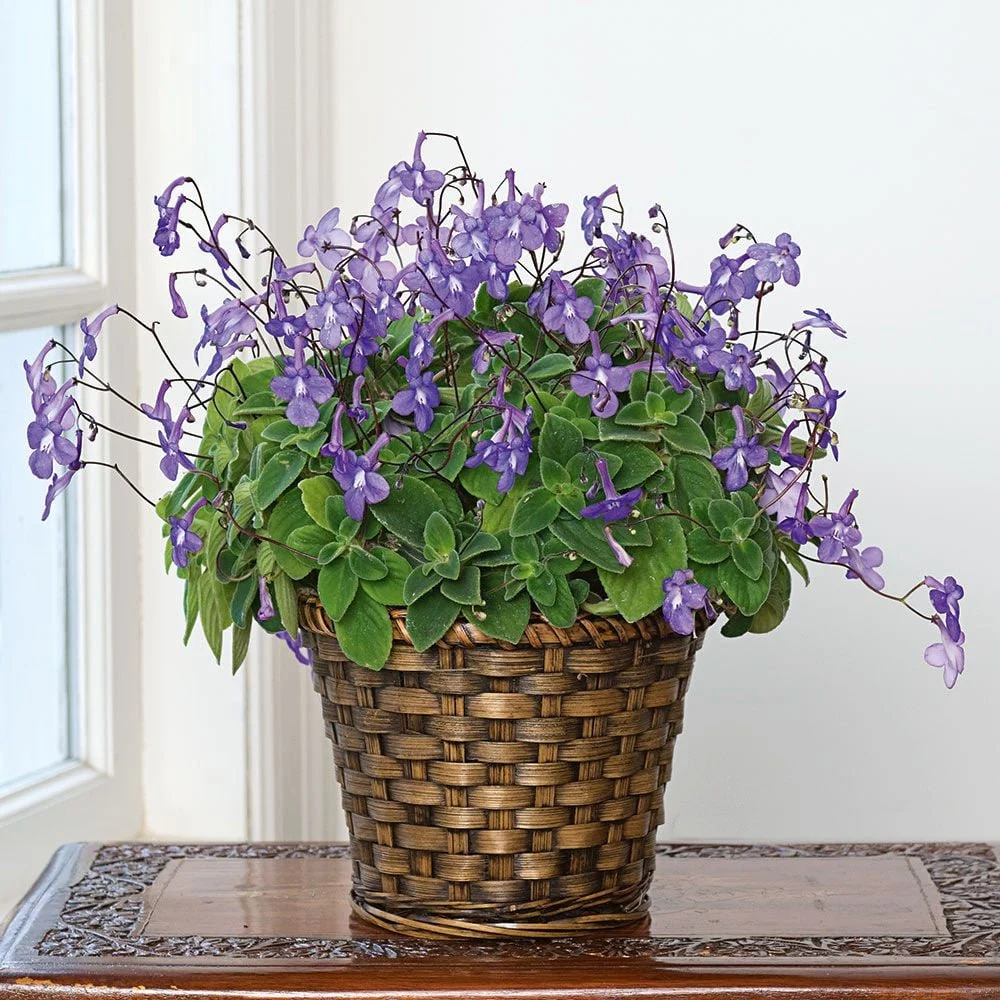Pink Pampas Grass (Cortaderia selloana) is a stunning ornamental grass that adds a dramatic and colorful flair to gardens with its feathery, pinkish plume-like flowers. It’s relatively easy to care for, though it does need certain conditions to thrive. Here’s a guide to taking care of Pink Pampas Grass:
1. Location
- Sunlight: Pampas grass thrives in full sun, so choose a location where it will get at least 6 hours of direct sunlight per day. This is essential for it to produce vibrant, fluffy plumes.
- Soil: It prefers well-draining, sandy or loamy soil. Pampas grass can tolerate poor soil, but it will perform best in slightly acidic to neutral soil with good drainage.
2. Watering
- Establishment: During the first year, water regularly to help the plant establish deep roots. After the plant is established, Pampas grass is fairly drought-tolerant and requires minimal watering.
- Ongoing: Water the plant when the soil is dry to the touch, but make sure not to overwater. It’s important not to let the grass sit in waterlogged soil, as this can lead to root rot.
3. Temperature and Hardiness
- Pampas grass is hardy in USDA zones 7-10. It can handle some frost, but extreme cold can damage the plant. In colder regions, it may die back in winter, but it usually regenerates in the spring.
- In hotter climates, provide it with a little extra water during very dry periods, though it can tolerate heat once established.
4. Fertilizing
- Light Feeding: Pampas grass generally doesn’t need much fertilization. In the spring, you can apply a light layer of compost or a slow-release balanced fertilizer to encourage growth.
- Avoid Over-Fertilizing: Too much fertilizer can lead to excessive growth of foliage at the expense of blooms.
5. Pruning
- Fall Cleanup: In late winter or early spring, before new growth begins, cut back the dead foliage to about 6-12 inches above the ground. This will make space for new shoots.
- Ongoing Maintenance: Remove any dead or damaged leaves throughout the year to keep the plant looking tidy. Be careful when cutting or trimming the grass, as it has sharp edges.
- Flowering: The large plumes will typically appear in late summer or fall. You can cut the plumes for indoor arrangements, but they can be left on the plant for a natural look in the garden.
6. Mulching
- In colder climates, mulch around the base of the plant to help protect the roots from freezing. Use a thick layer of organic mulch, like bark or straw, especially in the first few years of growth.
7. Pests and Diseases
- Pampas grass is relatively pest-resistant but may occasionally attract aphids, mealybugs, or spider mites. Keep an eye out for any pests and treat with insecticidal soap if needed.
- Fungal diseases are rare but can occur in humid conditions. Make sure the plant has good airflow around it to prevent issues.
8. Growth and Size
- Mature Height: Pink Pampas grass can grow up to 8 to 10 feet (2.4 to 3 meters) tall and wide, so ensure you plant it in a space large enough to accommodate its size.
- Clumping Growth: Pampas grass grows in a large, bushy clump, so plant it with enough space between other plants. It can be an excellent focal point in the garden.
9. Winter Care
- Pampas grass is generally winter-hardy in its growing zones. However, if you live in a colder region, protect it with a layer of mulch or burlap to help shield it from frost.
- After the first frost, the grass will likely die back. Don’t worry—it will return in the spring if the roots are healthy.
10. Propagation
- Pampas grass can be propagated by dividing the clumps every 2-3 years. Simply dig up the plant in early spring, divide the root ball into sections, and replant each section in a new location.
- It can also be propagated by seed, but this is a slower process and may take several years to see flowering.
11. Common Problems
- Overwatering: Pampas grass can suffer from root rot if the soil remains too wet, so be sure to provide well-draining soil and avoid overwatering.
- Weak Foliage: If the plant isn’t getting enough sunlight or water, the foliage might become weak and sparse. Ensure it’s planted in a sunny spot and that it’s watered appropriately.
By following these simple steps, your Pink Pampas Grass should thrive, bringing a dramatic, colorful statement to your garden with its beautiful feathery plumes!
Proudly powered by WordPress






